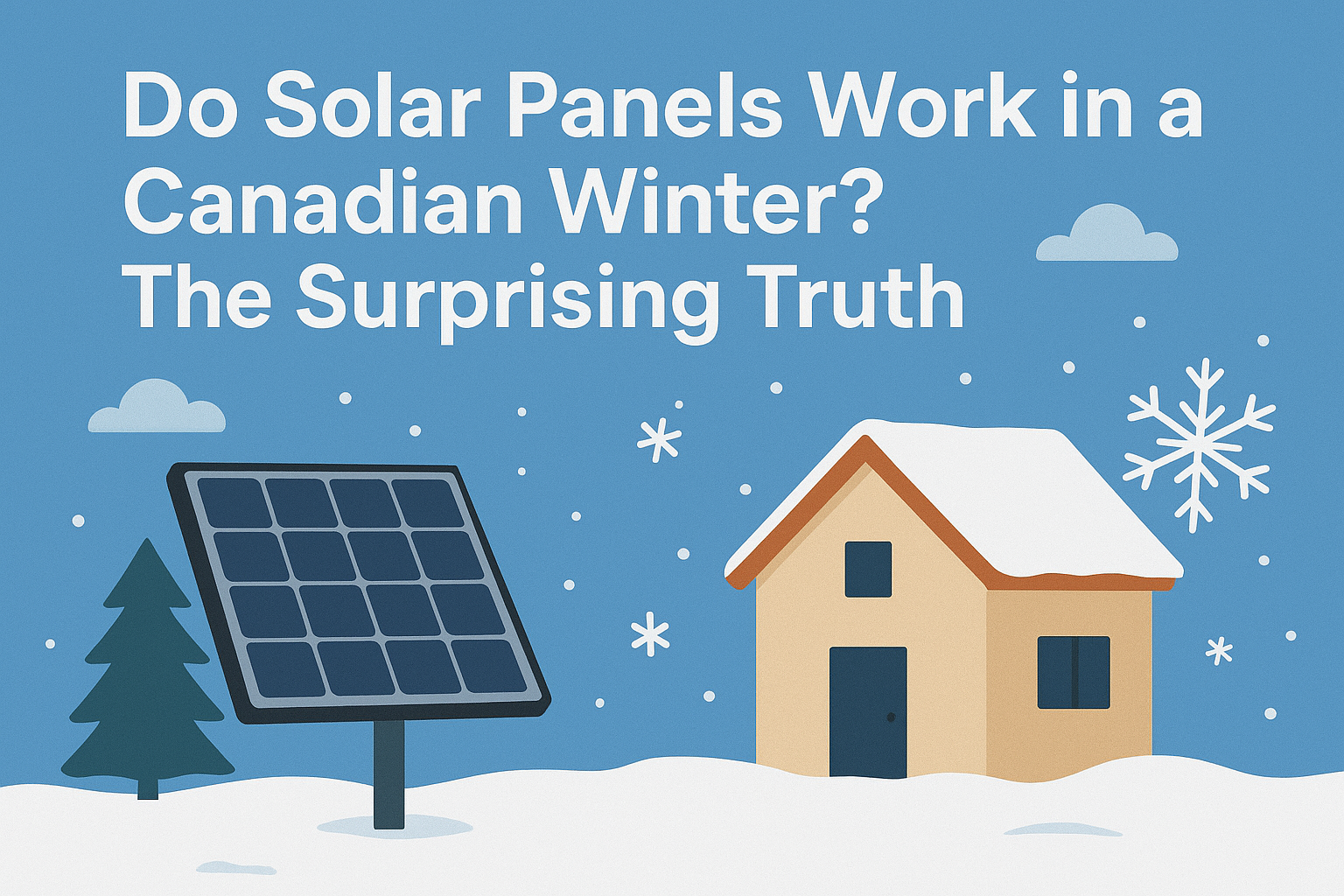Table of Contents
If you’re considering solar energy for your home in Canada, one question is almost certain to come up: “What happens during our long, cold, and snowy winters?” It’s a common misconception that solar panels shut down entirely for the season. The truth is far more encouraging!
While it’s true that energy production dips in the winter months due to shorter days, solar panels are far from dormant. In fact, under the right conditions, they can perform exceptionally well.
The Cold, Hard Fact: Solar Panels Love the Cold
It might seem counterintuitive, but solar panels are more efficient in colder temperatures. High heat can actually reduce a panel’s voltage and overall efficiency. The photovoltaic cells in your panels need sunlight, not heat, to generate electricity. A bright, sunny winter day can be a highly productive environment for your solar array.
But What About the Snow?
Snow is the real variable in the winter equation. Here’s how it works:
- A Light Dusting: A thin layer of snow often doesn’t cause major issues. Sunlight can still penetrate through a small covering, and the dark panels are designed to absorb heat, which helps melt light snow off relatively quickly.
- A Heavy Blanket: A significant snowfall will, of course, cover the panels and temporarily halt production. However, most modern solar panels are installed at an angle (optimized for our Canadian latitude). This allows snow to slide off much more easily than on a flat surface, especially as the sun warms the panels’ surface.
- The “Snow Boost”: After a fresh snowfall, the white ground can act as a giant reflector, bouncing additional sunlight onto your panels. This phenomenon, known as the albedo effect, can lead to a temporary boost in production on clear days following a storm.
How One Place Solar Designs Systems for Canadian Winters
At One Place Solar, we don’t just install panels; we engineer energy solutions built for Canadian resilience. Here’s how we ensure your system performs year-round:
- Optimal Angle and Placement: We calculate the perfect tilt and orientation of your panels to maximize exposure to the weaker winter sun and encourage natural snow shedding.
- Quality Equipment: We use tier-one, durable panels and microinverters. Microinverters are a key advantage; if one panel is covered in snow, it doesn’t drag down the performance of your entire system. The rest of your array keeps producing power.
- Energy Monitoring: Our systems include detailed monitoring, so you can see exactly how much you’re producing, even on a bright winter day, giving you full transparency.
Winter Solar Tips for Homeowners
- Let Nature Do the Work: Avoid the temptation to manually brush off your panels. You risk damaging the delicate cells or the glass coating. The sun and angle of the panels will clear them safely.
- Focus on Annual Production: The key to solar economics is annual net metering. You generate surplus energy during the long, sunny days of spring and summer. Your utility provider credits you for this excess power, which then offsets the cost of the electricity you draw from the grid during lower-production months like December and January. Over a full year, your system will balance out beautifully.
The Bottom Line
Yes, solar panels absolutely work in a Canadian winter. While you’ll generate less power than in July, a well-designed system will continue to produce valuable electricity, reduce your carbon footprint, and contribute to your energy savings 365 days a year.
Ready to see how a solar system performs for your specific home, in every season?
Contact One Place Solar today for a free, no-obligation assessment and energy production estimate. Let us show you how to make the sun work for you, all year long.
